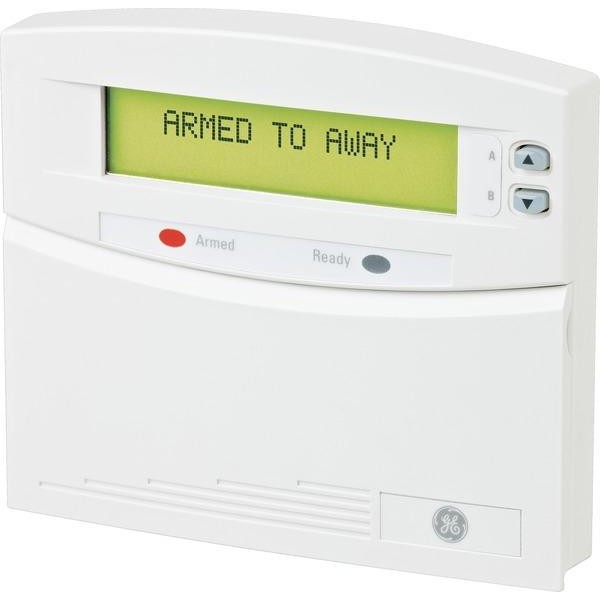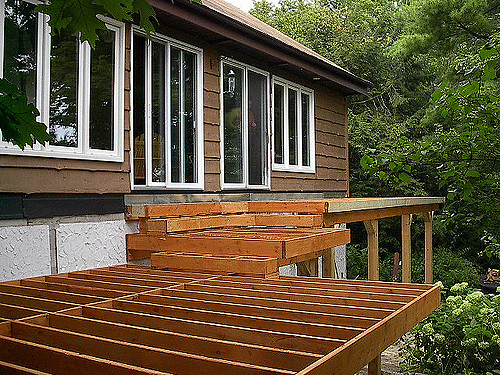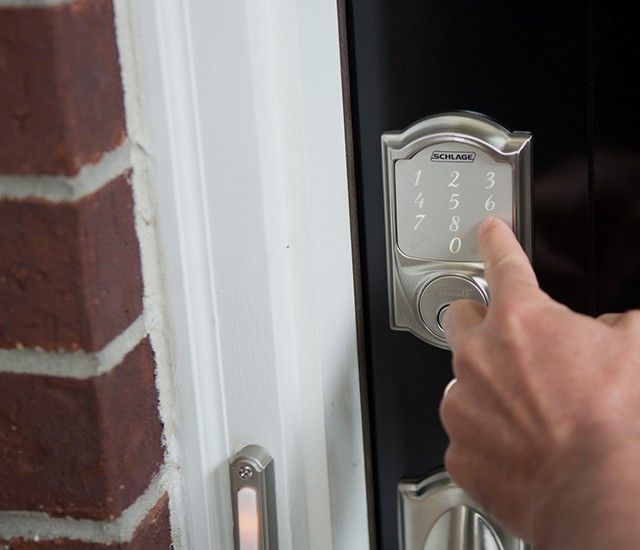In a previous post, we discussed Smart Security System Design regarding burglar alarms. That post addressed basic decisions that we help our customers make while designing security systems. As we pointed out in that post, many of our customers call us while building their own homes. Doing this allows us the freedom to add hardwired security equipment that we could not add after the home’s construction.
In this post, we share the most important security decisions you should make while building a house. Many customers contact us about new home security, and we always recommend starting as soon as possible. In addition to allowing us the freedom to easily complete any required wiring, doing so also delivers some security benefits. Vacant houses make popular targets for burglary and vandalism. Therefore, you should make plans to secure your home in the short term, during the construction process itself. We will begin by discussing how to address important security concerns before finishing construction. From there, we will examine steps you should take to ensure your home stays secure before you move in. Let’s begin by examining the most important alarm system devices to map out first.

If you plan on having a keypad — such as this one by Interlogix — installed on a second floor or a tricky area of your home to run a wire, make sure you have it done before completing construction.
Determine Keypad and Siren Locations
Most security systems we install utilize hardwired keypads and sirens. Therefore, you may find yourself limited in your ability to add these devices later. This fact makes determining the locations of these devices up front a top priority. You should install keypads relatively close to doors that you will regularly enter and exit. Your “entry delay doors” will allow you a short amount of time to disarm the system upon entering your home before activating the alarm’s siren. For this reason, you will want to plan your keypad spacing to ensure that you can get to a keypad fairly quickly from any exterior door you plan on using regularly.
Most homes only require one siren for the entire interior. However, large homes or homes with more than two habitable levels may need an additional siren or two. The same goes for split-level homes. The extra walls and space can lead to a muted siren sound when on the opposite end of the house. In addition, some homeowners also install an exterior siren. These sirens alert neighbors to alarm events. Additionally, burglars who activate your alarm hear that siren blaring before even stepping foot in your home. This raises the chance that they will leave without taking anything on the way out. Mapping out these devices now allows you more freedom than attempting to do so after your walls are up. Let’s look at another aspect of security that we like to address during a home’s construction.
Add Monitored Fire Detection
One of the benefits of new home security is the relative ease of adding a wired, monitored fire detection system. Making this system hardwired instead of wireless has a couple benefits. For one, it ensures that if one detector activates, the rest of the detectors sound as well. Additionally, state fire law requires an interconnected fire system in new homes. Having us install a complete, monitored fire detection system can fulfill this requirement. This means that you do not need to pay an electrician to install a smoke detection system during your home’s construction.
Unlike standard smoke alarm systems, monitored fire devices alert the authorities to smoke and carbon monoxide emergencies. This creates a tremendous amount of security for both your home and those living in it. You also have a financial incentive to install smoke detectors as part of your alarm system. As we pointed out in our Smart Security Tips to Save You Money, insurance companies discount their rates for customers with monitored fire detection. This discount often pays back the cost of the equipment itself within a year or two of installation. After that, any insurance money you save is simply money in your pocket. The combined security and monetary benefits of installing a monitored fire detection system make this decision a no-brainer for many of our customers.
Keep the Future in Mind Now

Future changes to the interior or exterior of your house — such as adding a deck — should be part of your security planning during construction. 7th GroovePhoto credit on Flickr used under the CC BY-SA 2.0 License.
When designing new home security, knowing what changes you may make in the future goes a long way. After all, the benefit of taking care of this work now is that we can get wires anywhere you need them. If you change the purpose of a room and need new security equipment after the fact, we no longer have this freedom. Therefore, we always ask customers to plan ahead while working with them to map their security equipment. As we just discussed, a complete home security system should include monitoring that addresses threats from both fire and burglary. Let’s look at how planning ahead can affect each of these types of security equipment.
Plan Ahead for Fire Detection
You may recall our overview of Smoke Alarm Requirements in Massachusetts. In that post, we discussed residential fire alarm requirements over the past several decades. Of course, any home built right now must satisfy the most recent — and therefore most strict — residential fire codes. Specifically, the addition of bedrooms has the ability to change your requirements the most. Many homeowners turn an office or attic space into a bedroom at some point. If you think you may do the same, make sure you plan for that change in advance.
Bedrooms require smoke detectors inside and outside the doors. They also require CO detection within 10 feet of the door. Consider adding that equipment now, before the walls are up, rather than later. At the very least, have us run the wire for those detectors now. If you do end up converting an area of the house to a bedroom, we will have a much easier time adding the detection at that point. Additionally, planning ahead allows you to add fire detection above and beyond the required devices. For example, you may plan on turning a storage area into a future art or music room. These rooms may not require monitored fire detection, but you should consider adding it anyway.
Plan Ahead for Burglary Notification Equipment
Changing the purpose of rooms can also affect your security plan. A future office, for example, may merit extra attention. A room used for storage that turns into a home studio or bedroom deserves the same treatment. Adding burglary sensors — or at last the wires required for future devices — now can save you the trouble and expense that comes with having us take a second trip to add this equipment down the road. Additionally, pay attention to how future exterior additions could affect entrance into your home. For example, if you plan on adding a deck, you may want to put window sensors on any second-floor windows that the deck could allow a burglar to access.
Make a Plan for Securing Your Home During Construction
A couple weeks ago, we posted about Securing Your House During a Home Renovation Project. Specifically, we discussed the importance of watching your home during the renovation itself. Renovations often require leaving part of your house vulnerable while completing work. New home security planning must take this concept one step further. Unlike a renovation, a new home remains almost entirely vulnerable during construction. Burglars often break in to new houses hoping to find tools, copper piping, or other potentially valuable equipment. Homeowners also often begin moving possessions in before moving in themselves. This makes a new home a prime target for a burglary.

A smart keypad deadbolt, such as this lock by Schlage, allows for both key-based entry and remote operation through a smart phone.
We recommend taking measures to secure your property during the construction process. Many of our home security customers install home surveillance systems. Installing these now rather than later allows your cameras to watch over your home before moving in. When installing the doors on your home, consider using keypad locks or smart locks to secure the main entrances. Doing this allows you to control access to your home without giving out keys. Since copies and lost keys often lead to break-ins, removing this danger now, while workers will be in and out of your house frequently, adds a strong measure of new home security. Additionally, using a smart lock connected to an interactive cell dialer — such as ours powered by Alarm.com — also allows you to track access to your home. Knowing when your door is locked or unlocked — and who locked or unlocked your doors — provides both peace of mind and security.
Creating a Complete Plan for New Home Security
If you have your own plans of building a home, we hope you have found this post helpful. Thinking about security before completing your house has huge benefits. It can also prove much more efficient cost-wise than adding security down the line. If you have any questions about any of the information discussed in this post, please do not hesitate to contact us. No matter what stage your new home is in currently, it’s never too early to get started. We provide free site surveys to address your security concerns and make recommendations of our own. Together, we will create a new home security plan to keep your home safe both during construction and well into the future.
